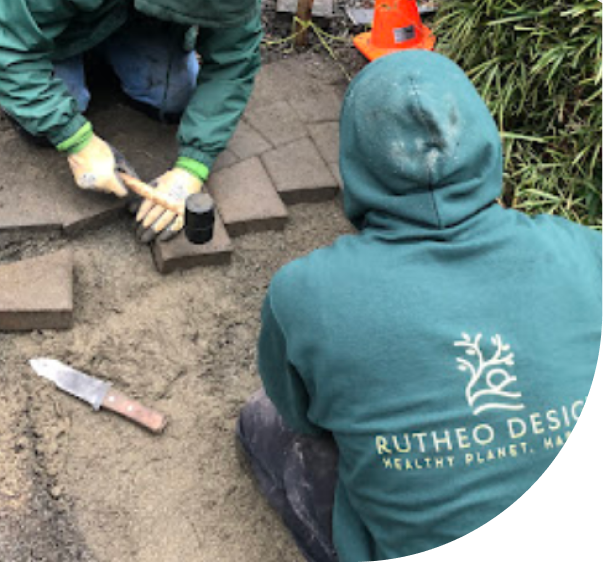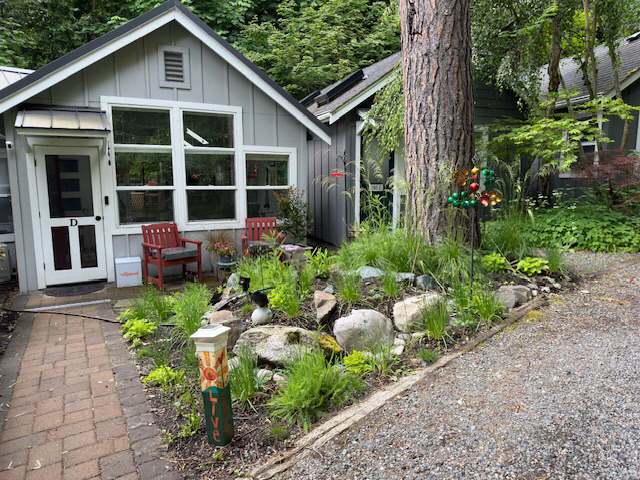
At Rutheo Designs, we believe that berry bushes and vines aren’t just about producing delicious fruit—they’re key players in creating vibrant, sustainable landscapes tailored to Seattle’s unique climate. The Pacific Northwest’s cool, wet conditions are a natural fit for many berry varieties like blueberries, raspberries, and blackberries, which thrive with minimal intervention when properly placed. Our approach focuses on integrating these edible plants into your outdoor spaces in ways that support biodiversity, enhance soil health, and create natural habitats for local pollinators. By choosing the right mix of native and climate-adapted species, we design gardens that are both beautiful and productive, with berry plants that serve as living, edible art while contributing to a resilient ecosystem.
Incorporating berry bushes and vines into edible landscaping offers more than just fresh, homegrown produce. These plants enhance biodiversity, support local ecosystems, and add aesthetic and functional value to gardens. At Rutheo Designs, we emphasize sustainable landscaping practices that integrate edible plants seamlessly with ornamental features.
Berry bushes and vines create microhabitats that support a diverse range of organisms. They attract pollinators like bees, butterflies, and birds, contributing to a healthier garden ecosystem. The dense foliage provides shelter for beneficial insects, while the berries offer a food source for wildlife, promoting a balanced and thriving environment.
These plants are not only practical but also visually appealing. The vibrant colors of ripening berries, combined with seasonal foliage changes, enhance the visual interest of any garden. Berry bushes can serve as natural hedges or privacy screens, while climbing vines add vertical dimension to trellises, fences, and pergolas, maximizing space in smaller yards.
Berry-producing plants play a critical role in supporting pollinators. Flowers from berry bushes attract bees and butterflies, essential for pollination and biodiversity. Birds benefit from the fruits, while the plants themselves offer nesting sites and protection. By fostering these interactions, gardens become vital corridors for wildlife in urban and suburban landscapes.
The Pacific Northwest’s mild, temperate climate is ideal for a wide variety of berry bushes and vines. Seattle’s cool summers and wet winters support the growth of native and non-native species alike. Drought-tolerant varieties are increasingly important due to shifting climate patterns, making berry bushes and vines a resilient choice for sustainable gardens.
Blueberries thrive in the acidic soils common in the Seattle area. They require full sun and well-drained soil rich in organic matter. Highbush varieties are popular for their large berries and ornamental fall foliage. To ensure optimal fruit production, plant multiple cultivars for cross-pollination.
Raspberries are versatile and easy to grow. They prefer well-drained soil and benefit from support structures like trellises. Summer-bearing and everbearing varieties allow for extended harvest seasons. Regular pruning promotes healthy growth and prevents overcrowding, which can reduce yields and increase disease susceptibility.
While blackberries are abundant in the Pacific Northwest, managing their aggressive growth is crucial. Thornless cultivars are less invasive and easier to maintain. Sustainable practices include regular pruning, controlled spreading, and using barriers to prevent unwanted propagation. Their resilience makes them ideal for erosion control on slopes.
Currants and gooseberries are hardy, shade-tolerant shrubs that produce tart, flavorful berries. They are low-maintenance and resistant to many pests and diseases. These shrubs thrive in cooler climates and can be integrated into understory plantings, making them suitable for diverse garden designs.
Elderberries are fast-growing, adaptable shrubs valued for their ecological and culinary benefits. They support pollinators with their abundant flowers and provide nutrient-rich berries for wildlife and human consumption. Elderberries prefer moist, well-drained soils and can be used in naturalized landscapes or as ornamental focal points.
Hardy kiwi vines produce small, smooth-skinned fruits with a sweet, tropical flavor. They require sturdy support structures and full sun to thrive. These vigorous climbers are cold-hardy and adaptable, making them an exciting addition to Pacific Northwest gardens.
Grapes are a classic choice for edible landscaping. They prefer well-drained soil and benefit from trellising to improve air circulation and sunlight exposure. Sustainable cultivation involves proper pruning, organic pest management, and water-efficient practices. Selecting disease-resistant varieties reduces the need for chemical interventions.
Passionfruit vines add an exotic touch to edible landscapes. They require warm, sheltered locations and benefit from rich, well-drained soil. While more sensitive to cold, certain hardy varieties can be grown successfully in protected microclimates within the Seattle area.
Hops are not just for brewing; they are also valuable ornamental and functional plants. Their vigorous growth provides quick coverage for trellises and pergolas, offering shade and privacy. Hops thrive in full sun with moderate water needs, making them a sustainable choice for multifunctional landscapes.
Sustainable berry gardening doesn’t end with planting and seasonal maintenance. Long-term care strategies, mindful harvesting, and ecosystem-supportive practices are essential for maintaining plant health, productivity, and environmental benefits.
Harvesting at the right time ensures maximum flavor, nutritional value, and plant health. Berries should be picked when fully ripe, as most do not continue to ripen after harvest. Indicators include vibrant color, slight softness to the touch, and ease of detachment from the stem.
Use gentle handling to avoid bruising, and harvest during the cooler parts of the day to preserve freshness.
After harvesting, timely post-harvest care helps maintain plant vigor. Remove any fallen fruits to reduce disease risk and pests. Light pruning to remove spent canes or thinning crowded areas improves airflow and sunlight exposure, supporting healthy regrowth.
Mulching with organic materials replenishes nutrients lost during fruit production and helps retain soil moisture.
Perennial berry plants benefit from consistent maintenance to ensure longevity:
Regenerative gardening practices focus on enhancing soil health, which directly influences plant productivity.

At Rutheo Designs, we are dedicated to transforming your outdoor spaces into beautiful, sustainable landscapes that reflect your vision and the unique character of the Seattle area. We offer services in native plant landscaping, water-efficient irrigation, custom landscape design, and hardscaping solutions tailored to your goals and the local environment. Every project is unique, and we take the time to listen to your needs and offer personalized solutions that align with both your aspirations and Seattle’s natural surroundings.
We invite you to reach out to us to start the conversation about your landscaping needs. You can contact us by email at connect@rutheodesigns.com or give us a call at (360) 844-2989. Whether you have specific questions or are ready to schedule a consultation, we’re eager to help you bring your outdoor vision to life with the care and expertise that Rutheo Designs is known for.